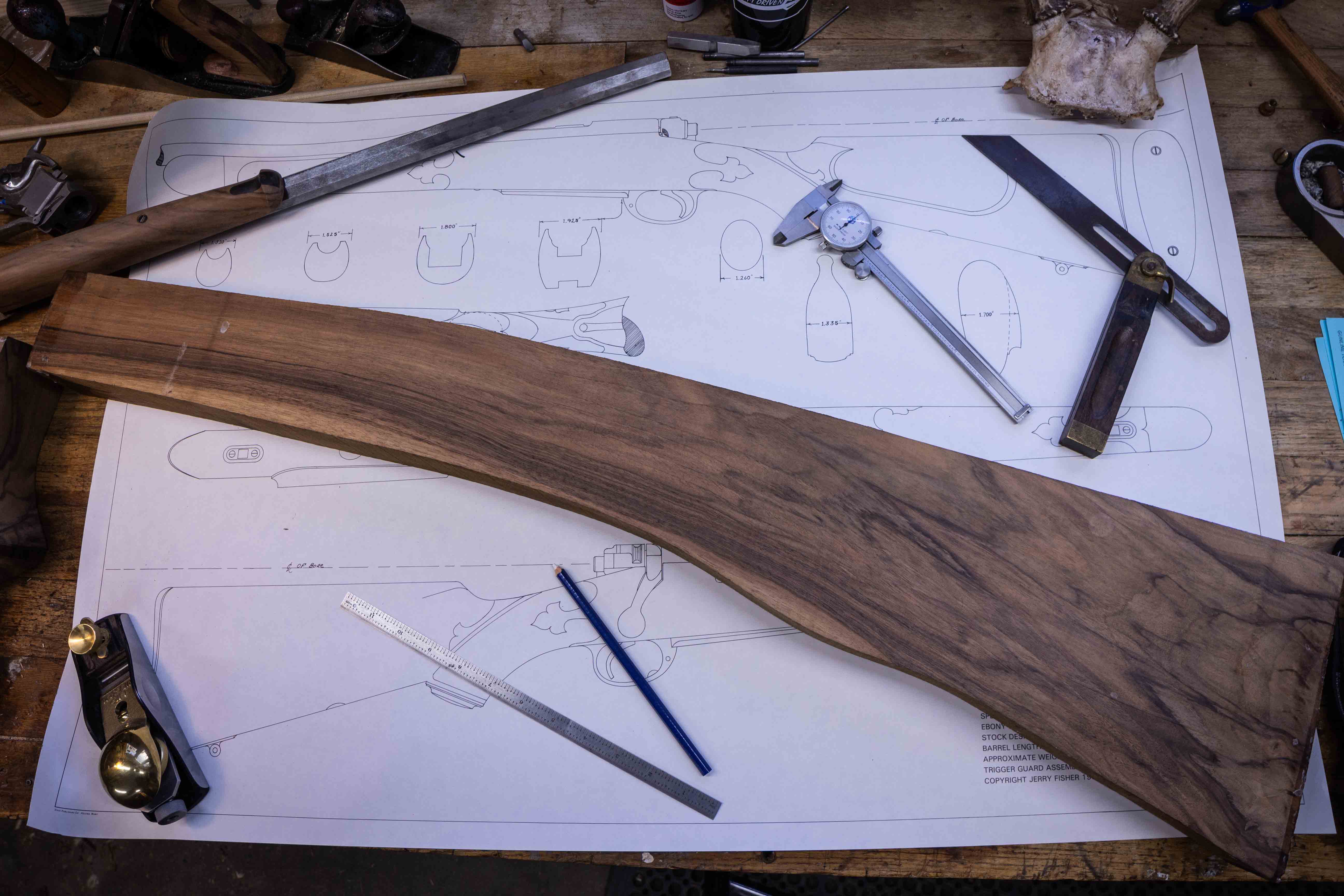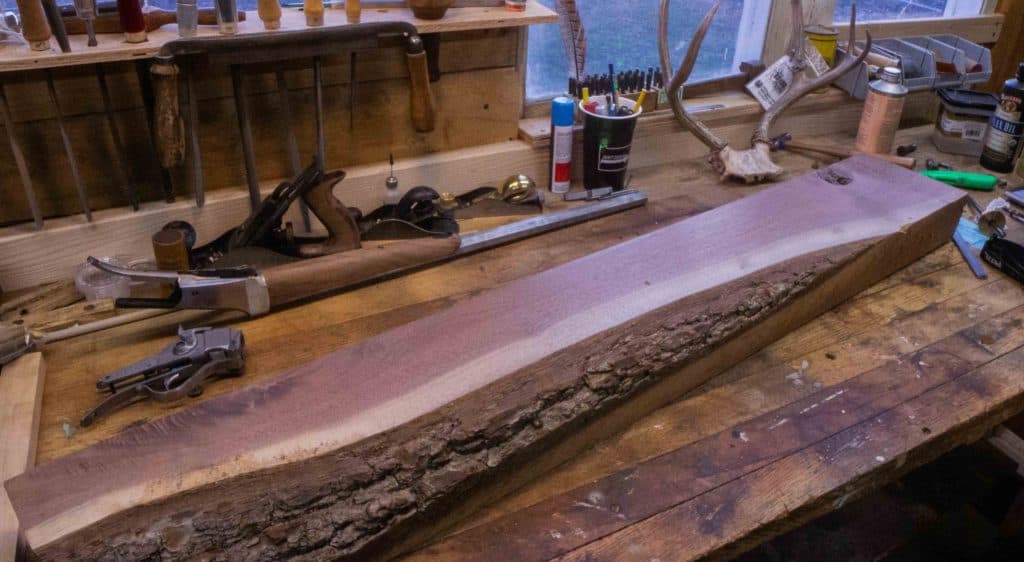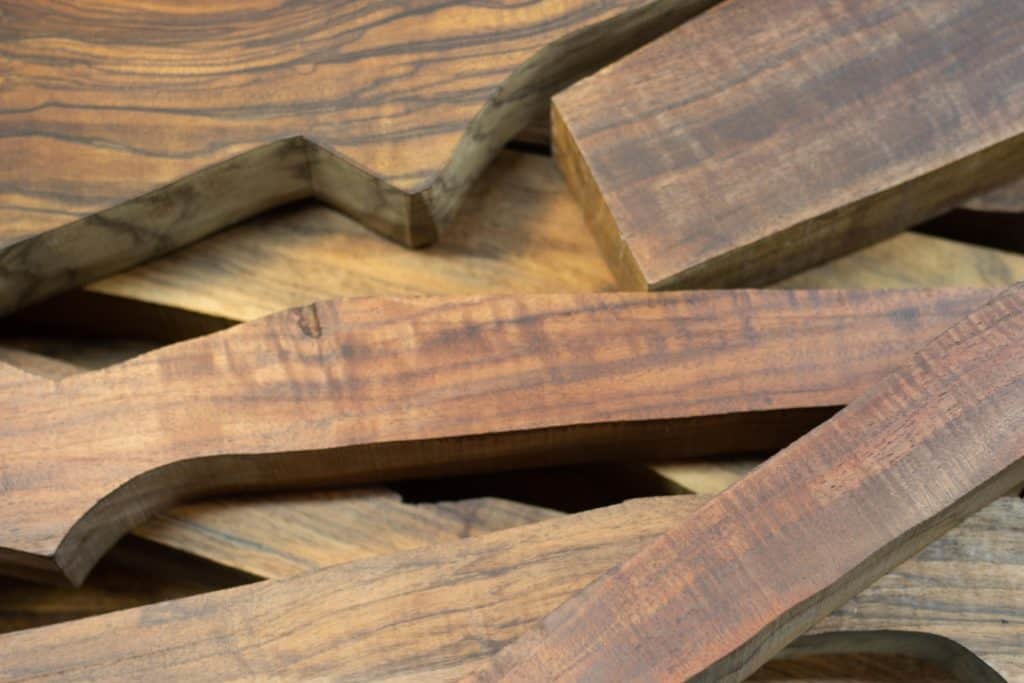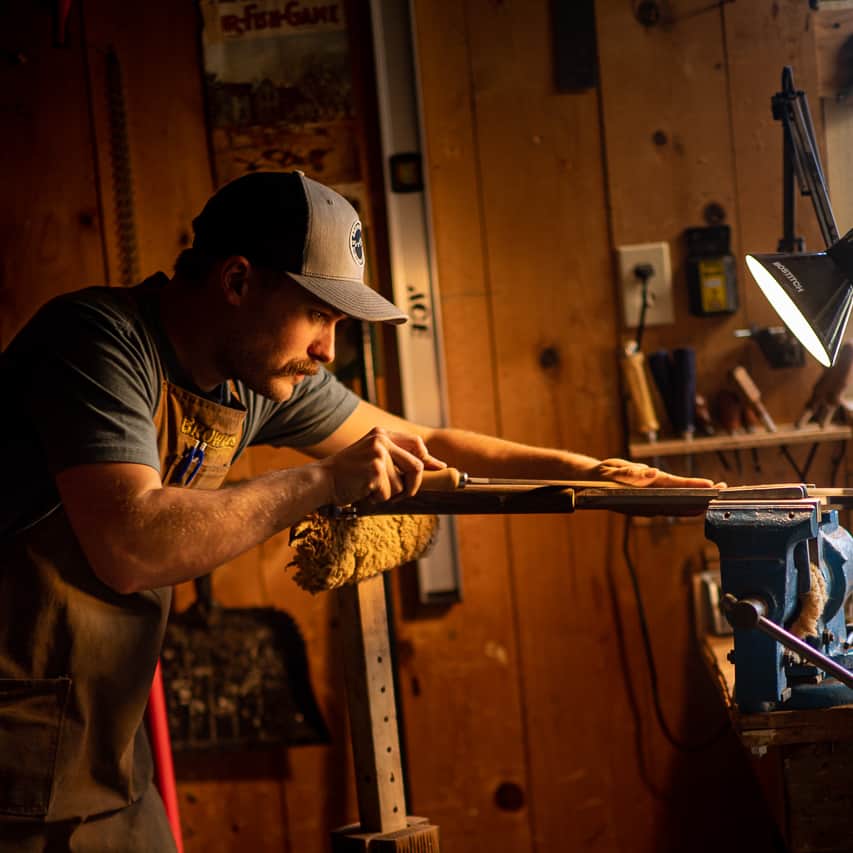
Rifle and shotgun builders will spend countless hours reviewing gunstock blanks to find the perfect blank for the job. First and foremost, the size is essential as it needs to be large enough for the project at hand. Functionality, beauty, and affordability are considered if it meets your size requirements.
Affiliate Disclosure: This article may contain affiliate links. When you use these links, I earn a small commission from each sale generated at no cost to you. This commission helps me continue to put out free content. I work a full-time job that I am very happy with; therefore, I don’t need this commission and am not obligated to speak highly of any product. Everything written is my own opinion: the good, the bad, and the ugly.
Gunstock Blank Size
The size of the blank needed is determined by what type of stock will be made. Two-piece stocks for shotguns, lever guns, and single-shot rifles don’t need as large of a blank to work with. For a standard bolt action rifle, you will need a blank that measures at least 6″ x 34″. For a Two piece stock, 7″ x 20″ will suffice. If making a stock with a cheekpiece, you will want the blank to be at least 2 1/2″ wide.

Gunstock Function
The layout or function of the gunstock is by far the most important. The last thing you want is to have a beautiful presentation-grade piece of wood to break at the wrist. So while the wrist area is critical, other areas such as the toe and face(two-piece stocks only) need to be considered.
The Layout
If you have the advantage of picking out a stock blank in person, you should always use a plexiglass stock template to aid in the layout. Most wood dealers will supply pictures of the wood with rough stock outlines drawn to help you see how the grain flows throughout. Look for the grain to flow straight through the wrist on both sides and out through the toe.
If laying out a two-piece stock with receiver tangs, look at the part where the head meets the receiver. These areas tend to be pretty thin once all the clearances are cut for the internal workings. The grain should run parallel to the tang at this point for the most strength.
Sapwood is the part of the tree that is still living and is usually lighter in color than the rest of the wood. It is found along the edges of the blank and is very noticeable. A tree uses sapwood to transfer water and nutrients throughout it; therefore, it tends to be a very moist part of the tree. It tends to shrink as it dries but should not cause any issues if the blank has been dried properly.
Can you use sapwood in a stock blank? Yes. As long as it is dried out correctly. Most stockmakers will try to avoid sapwood for aesthetic reasons, but there is a lot of evidence suggesting sapwood is as strong if not stronger than the heartwood typically used for gunstocks.

Slab Sawn or Quarter Sawn?
When choosing a gunstock blank for a project, you will eventually come across the question of slab sawn or quarter sawn. This refers to how the blank of wood was processed or sawn at the sawmill.
Slab Sawn is the most common way you find a gunstock on the market. This is simply a numbers game, a sawmill will get more blanks out of a tree when slab sawing wood vs. quarter sawing. Therefore you see more of them. A slab-sawn blank can be identified by vertical running end grain. On the stock side, it will look like “V’s” coming out from the buttstock area.
Quarter Sawn is generally the most desirable for use in gunstocks. When looking at the butt, the growth rings will be oriented horizontally across, resulting in an even grain flow on both sides of the stock. The sides of the stock will have the straight and long grain running the entire length of the blank. Quartersawn wood is also much slower to dry than slab sawn but tends to warp less and be more stable.
Types of Gunstock Wood

There are many different types of woods used for gunstocks. However, Walnut has proved itself the best for the job. There are four main types of walnut; Black(Juglans Nigra), English(Juglans regia), Claro(Juglans Hindsii), and Bastogne(Juglans x paradox). All other walnuts found on the market fall under one of these four types.
Read more on all of the types of walnut used for gunstocks below.
The Types of Walnut for Gunstocks: A Complete Look
Apple, Beech, Maple, and Myrtle have all been used extensively for gunstocks. Each of them has its pros and cons. Be familiar with the working characteristics of the type of wood you will be using.
Grading a Wood Gunstock
There is no standardization to grading a gunstock. Almost every source for stock blanks will grade them differently based on their guidelines. The figure refers to any marbling, fiddle back, burl, or feather crotch found on the particular piece. The color refers to any variations in color, particularly in Claro, where oranges and reds are found.
Stock grading is typically done when the stock is still a full blank, meaning that your finished product can be a grade higher or lower when finished. This is most likely to happen in a slab-sawn blank that only has figure on one side. If you want full figure throughout the stock, it is best to pick a blank that shows figure on both sides.
Below is a guide that I made to grade walnut blanks.
Standard—Straight Grain Walnut
Semi Fancy—Contains some character in either figure or color
Fancy—Good color or figure through approximately 25% of the stock, on one or both sides
XF—Good Color or figure through approximately 50% of the stock on one or both sides
XXF— Good Color or Figure through approximately 75% or more of the stock on both sides
XXXF—Good color and figure through the entire stock on both sides
Presentation —100% full figure on both sides, excellent color, and good grain flow
Affordability
Remember that the higher the grade of wood you desire, the more money you will spend. There is a direct correlation between price and figure regarding gunstock wood. If you are looking for a functional and robust blank, there are a lot of options in the standard grade wood category.
Has It Been Dried Properly?
Among all the other things mentioned thus far, the blank has to be appropriately dried. There are two main ways that wood is dried or seasoned; air-dried and kiln-dried. Air-dried is the best option when it comes to stock blanks. I won’t even consider using a kiln-dried piece of wood for a gunstock unless I have to.
Air drying for at least five years is the best for stock blanks. This gives the blank plenty of time to dry out and finish moving or settling thoroughly. The moisture content should fall between 10 and 12 percent.
Use coupon code KTG10 to get 10% off your order of $150 or more at Brownells.
Kilns work great for lumber used for most wood projects like furniture building but should not be used for a gunstock blank. This is because gunstock blanks are much thicker than standard boards used for things like furniture.
An improperly dried stock blank can be miserable to work with. Checking, warping, cracks, and blowouts are just a few of the issues you will encounter. Unless you like your rifle to shoot unpredictably with every change in the weather, find a properly dried blank!
I will be diving deeper into drying wood properly at a later date.

Written by: Kurt Martonik
Kurt is a Gunsmith, Reloader, Hunter, and Outdoorsman. He grew up in Elk County, Pennsylvania, where he became obsessed with the world of firearms. Following high school, Kurt enlisted in the United States Air Force as a Boom Operator, where he eventually rose to the position of Instructor. After his military service, he attended the Colorado School of Trades(CST) in Lakewood, CO for gunsmithing. Following graduation, he accepted a job at C. Sharps Arms in Montana, where he worked as a full time stockmaker and gunsmith.